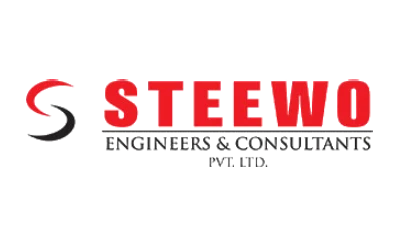At the core of our company’s operations lies the hot rolling mill, a sophisticated piece of machinery integral to the steel production process. The hot rolling mill is the furnace in which raw materials are turned into the strong, adaptable steel parts that are the foundation of a myriad of Global enterprises. This technical marvel works by heating metal billets or ingots above their recrystallization point, which makes the metal flexible. These heated materials are then passed through a series of precision-engineered rollers, which apply immense pressure to reduce their thickness and shape them into various forms such as sheets, plates, or structural sections. The Steewo Engineers specializes in everything, from turnkey projects to single modular projects, depending on the needs of your business.
Our hot rolling mills satisfy the stringent requirements of modern manufacturing while promoting innovation in the steel industry. They achieve unsurpassed precision and efficiency through the use of state-of-the-art technology and sophisticated control systems. When you choose Steewo Engineers, you are getting assured quality. Additionally, you get the most cutting-edge and futuristic hot-rolling products available, allowing you to transform and completely reimagine the look of your company.
A Comprehensive Guide To Hot Rolling Mill Process
The primary goal of the entire steel rolling process is to reduce the cross-section of the enormous plates and ingots to manufacture complete or semi-complete components. In metalworking processes, a hot rolling mill is considered to be a commonly used technique. This method involves heating the metal above the temperature of recrystallization, which distorts its flexibility during rolling. This process ensures that the volume and features of the metal are maintained while creating various shapes and dimensions.
The metal is heated, then it is passed through rolling equipment to flatten and decrease the total cross-sectional area while maintaining its volume and uniformity. The hot rolling method and the resultant product are widely used in the building industry.
- Heating: The process begins with heating the metal to temperatures above its recrystallization point in a reheating furnace. This step ensures that the metal becomes sufficiently malleable for shaping during rolling.
- Rolling: Once heated, the metal is fed into the hot rolling mill, where it passes through a series of rollers that exert pressure to reduce its thickness and shape it according to the desired specifications.
- Finishing: After the initial rolling process, the metal may undergo additional treatments such as cooling, quenching, or annealing to optimize its mechanical properties and enhance its surface finish.
How Does The Hot Rolling Process Work For Steel and Stainless Profiles?
Steel billets and blooms are heated at an extreme temperature to initiate the hot rolling procedure. The temperature is varied based on the process needs and surpasses a minimum of 1100 degrees. The rolling mechanism is used to pass the metal through to make sure the edges and grain structure of the metal are intact. At a high temperature, the slabs or blooms pass through the casting process and are then fed into the rolling mills. Rolling processes improve the metal’s strength, hardness, ductility, formability, vibration and shock resistance, and weldability.
Intense force and pressure are applied during the treatment process to clean the metal and get rid of the mill scales. Doing so ensures that no surface defects on the final finished items. Checking the steel’s cooling rate after it cools down is important to adjust the microstructure and crystallization of the metal, depending on its intended application.
Why Is Hot Rolling Preferred?
Hot rolling stands as the favored approach among steel rolling mills, primarily because of the specific traits it imparts to the steel. Steel that goes through the hot-rolling process tends to be
- Stronger.
- More Ductile.
- Tougher.
- Weldable.
- Resistant to Shock and Extreme Vibrations.
- Formable.
What Are The Advantages of Hot Rolling
There are several benefits associated with using the hot-rolling method for steel rolling, all of which contribute to the quality of the final product. Here are some of the various advantages.
- Enhanced Mechanical Properties
Heat and pressure cause certain qualities and attributes of steel to change as it passes through a hot rolling mill. Steel’s quality is enhanced by certain mechanical qualities that undergo the greatest alteration. For example, properties such as elongation percentage, elasticity, shock resistance, and overall toughness improve drastically.
- Altered Grain Structure
The metal’s grain structure alters in the hot rolling mill. The grain structure that plays a vital role gets refined. The standard coarse grain is changed into finer grains, changing the metal’s properties.
- Change in Porosity
The hot rolling mill and its procedure guarantee the complete removal and elimination of the metal’s porosity. This alteration due to hot rolling creates a tougher, stronger, uniform metal in the structure.
- Distribution Of Impurities
Many impurities exist in metals and steels, which might impact the product’s formation and end outcome. In hot rolling mills, impurities, such as slag, are distributed throughout in an even manner. Those parts would have weakened and been more prone to breaking if they had stayed concentrated.
- Requirements of Low Pressure
The incredibly high rolling temperature in hot rolling mills facilitates an easier metal deformation process. This temperature reduces the requirement for high pressure, making the process easier.
Why Rely On Steewo Engineers For The Hot Rolling Mills?
So you are looking for suitable hot rolling mills and their equipment. Look no further, as Steewo Engineers delivers you with anything your steel rolling mill will ever need. We have been the best and most favored integrated hot rolling mill manufacturer for many years. Our hot rolling mills are built with extreme care to provide unmatched accuracy, dependability, and performance. Whether it’s optimizing efficiency, enhancing product quality, or reducing environmental impact, Steewo Engineers is dedicated to delivering cutting-edge solutions that drive success. When you choose Steewo Engineers for your hot rolling mill needs, you can trust that you’re partnering with a company that is committed to your success every step of the way.
FAQs
How does a hot rolling mill work?
In a hot rolling mill, metal is heated in a furnace to its plasticity range, then passed through rollers that apply pressure to reduce its thickness and shape it into desired forms such as sheets, plates, or bars.
What is the difference between hot rolling and cold rolling?
Hot rolling involves heating metal above its recrystallization temperature and passing it through rollers to shape it, while cold rolling occurs at room temperature and produces a smoother surface finish with tighter dimensional tolerances.
What types of materials can be processed in a hot rolling mill?
Hot rolling mills are primarily used for processing metals such as aluminum, steel, and copper alloys, among others.
What are the advantages of hot rolling over other manufacturing processes?
Hot rolling offers several advantages, including improved material properties, higher production rates, and the ability to shape large sections with minimal waste.
What factors should be considered when selecting a hot rolling mill for a specific application?
There are several factors to take into consideration, such as the kind of material being processed, the volume of production, the intended product requirements, financial restrictions, and the availability of installation space.



